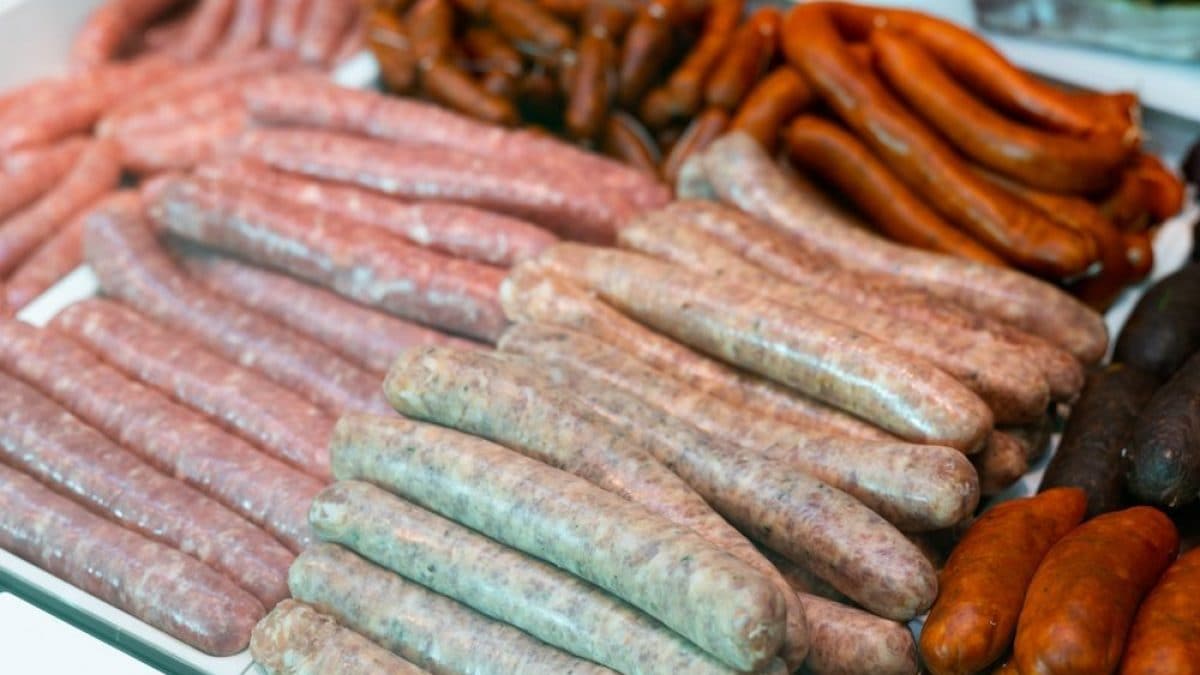
In the film "If You Want to Eat Me," Bud Spencer and Terence Hill have a characteristic sausage challenge in the circus pub, while the place is being demolished behind them. This hilarious scene sees the two protagonists eat sausage after sausage, served on enormous plates, each skewered with a colored stick, which they place on the table to count and see who wins. This scene makes us reflect on how sausages are a popular and popular food throughout the world, beyond the world of cinema.
In the United States, sausages come in an astonishing variety, reflecting the country’s patchwork of regional traditions and immigrant roots. Pork remains the most common base, but you’ll also find versions made from beef, chicken, turkey, venison, and even bison. There’s the smoky Southern andouille, the peppery hot links of Texas barbecue, and the sage-forward breakfast sausage that anchors so many morning plates. Head north and you’ll meet Polish kielbasa, German bratwurst, and Wisconsin beer brats, while out West, green chile sausage and apple chicken sausage add a lighter, spicier twist.
When it comes to sausages in the U.S., there's always a wide choice, but we're not the only ones with this specialty. The entire world offers tasty products, complemented by other local ingredients. Let's take a hypothetical journey and try to discover the varieties of sausages from around the world.
1. Spanish Sausages
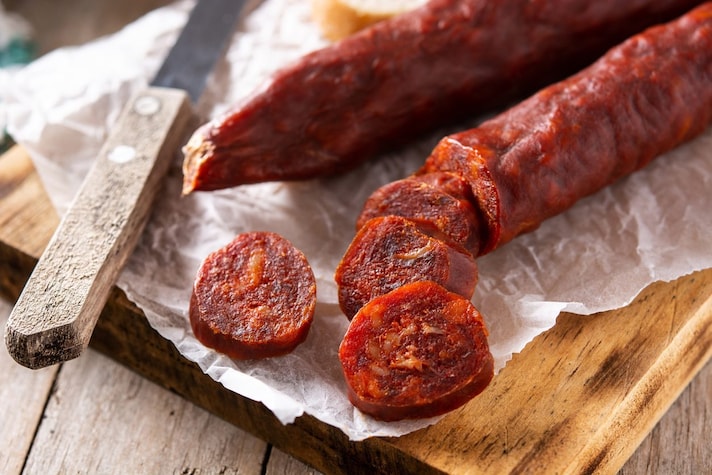
A key ingredient in many local festivals, chorizo is a spiced pork sausage. Long and narrow with a characteristic U-shape, Iberian chorizo is easily recognizable by its intense red color, created by the paprika, garlic, and other spices.
Made with pig's blood, morcilla, on the other hand, is somewhat reminiscent of black pudding and is a sausage enriched with rice or onions, breadcrumbs, or other grains. It can be enjoyed fresh in slices, or cooked, pan-fried, or grilled. It is a dish deeply rooted in Spanish family and community traditions, and almost every region has its own version. Morcilla de Jaén, typical of Andalusia, for example, differs from other sausages in that it lacks blood and instead contains bacon and pork fat.
2. Portuguese Sausages
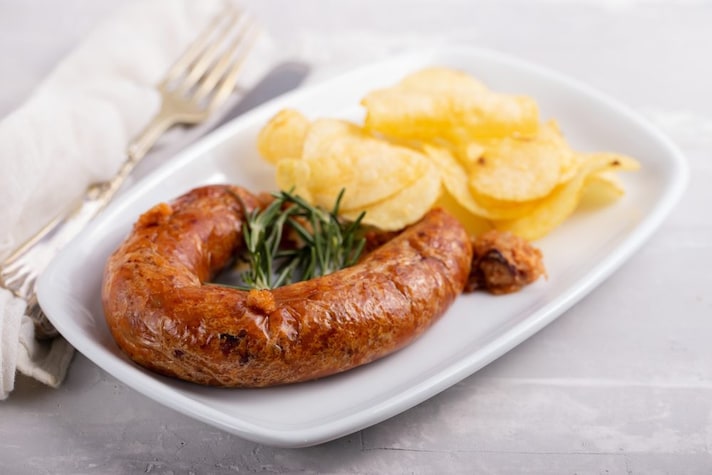
Alheira is a unique sausage, born from a historical tradition linked to the Jewish and Muslim communities in Portugal, where the consumption of pork is not permitted. For this reason, alheira is traditionally made with poultry such as chicken, turkey, or duck, and other ingredients such as bread, oil, garlic, and lard, offering an alternative to typical pork-based sausages. This adaptation has allowed the communities to maintain their food traditions while integrating into Portuguese culinary culture.
Produced only in a small area in northern Portugal, in addition to having obtained the Spanish Protected Geographical Indication, alheira de Vinhais is known for several distinctive characteristics. It is typically made with poultry, but may also include pork, depending on local tradition. A key aspect is its smoking process, which gives it a unique flavor. The texture and flavor are also enhanced by the use of ingredients such as bread, garlic, and spices.
Alheira de Barroso-Montalegre, also a PGI, is produced in the Montalegre district. This variety is made with pork, but also chicken and game, and is distinguished by the use of local ingredients specific to the districts of Boticas, Chaves, and Montalegre, in the province of Vila Real. This variety also undergoes a slow smoking process, a result of the locals' habit of constantly keeping the fireplace lit to protect themselves from the prolonged cold.
3. French Sausages
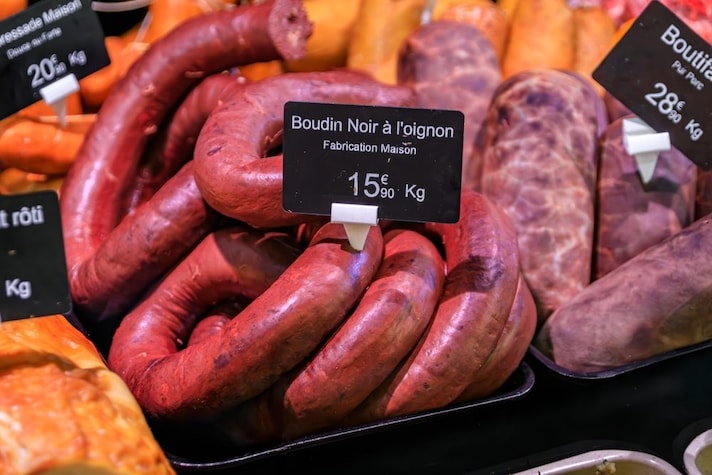
Our cousins across the Alps also have their own specialties in the field of cured meats. For example, boudin noir, French black pudding, is a traditional product derived from peasant culture: it is prepared with boiled potatoes mixed with diced bacon, beetroot, pig's (or beef's) blood, wine, spices, and natural flavors. It is generally fried or grilled, accompanied by potatoes or apples.
Then there's andouillette, a traditional French sausage found in various regions, with famous versions in Lyon, Troyes, Cambrai, Rouen, Provence, and Périgord. It's made from coarsely minced pork and veal, richly spiced, which gives it a rich flavor. Typically grilled or pan-fried, it's often served with mustard.
There's also Toulouse sausage, a key ingredient in traditional cassoulet, whose pinkish-red flesh is made from lean meat (shoulder) with a quarter of the breast, sugar, salt, and pepper. Finally, morteau, famous for its smoking over fir wood, adds a distinctive touch to many dishes, especially when served with lentils.
4. English and British Sausages

Cumberland sausage PGI is a British pork sausage that, unlike other sausages, is not tied but rather wrapped in the characteristic spiral shape. Its ingredients include boneless pork (at least 80%), toasted bread, seasoning, and water. It has a coarse grain, a pink color with visible seasoning stains, and is known for its spicy, savory flavor.
Black pudding, also known as Scottish black pudding, is a hard, crumbly sausage made with pork blood and fat or beef lard, oatmeal, and sour cream. Once ready, black pudding can be eaten raw, boiled, or roasted.
5. German Sausages
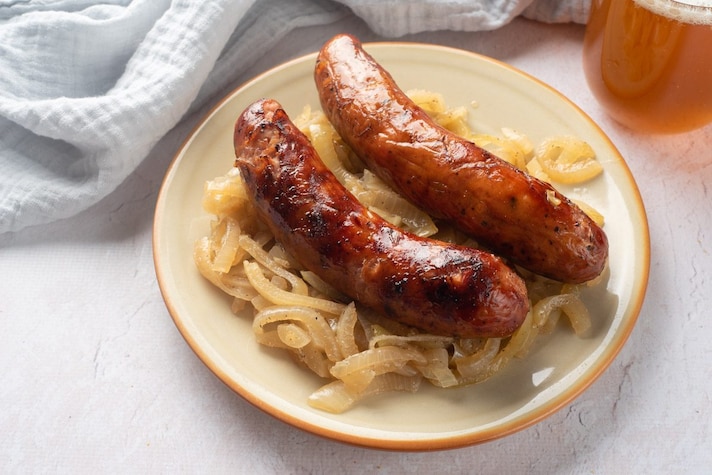
Famous for its sausages and sauerkraut, Germany boasts several popular sausages. The bratwurst, made from pork and beef, originated in southern Germany and has become famous worldwide, especially in the United States. Another specialty is the wollwurst, typical of Bavaria, characterized by its particular texture: the veal is soaked in milk and cooked briefly at high temperatures, achieving a golden color and a wool-like consistency. Another characteristic is the absence of the typical casing, which is why it is also called "nackte" (naked).
There are many other famous sausages in Germany: for example, the Thüringer Rostbratwurst PGI, typical of Thuringia, which is made with pork cheek without the rind, with the possible addition of veal or beef and often served in a small baguette with mustard.
Nürnberger rostbratwurst are small sausages from Nuremberg, traditionally served in small portions. Munich weißwurst is a white sausage made with veal and pork, parsley, and spices, often accompanied by sweet mustard and pretzels.
Currywurst is another delicacy, consisting of sliced sausages topped with a ketchup and curry sauce, a very popular street food in Germany.
Other popular sausages include the bockwurst, often served with mustard, the frankfurter wurstchen, commonly called "Frankfurter", and the rote wurst associated with the regions of Hanover and Hesse.
6. Swiss Sausages

When you think of Switzerland, you think of cheese, but one of its most outstanding products is the cervelat, a sausage similar in appearance to a frankfurter. Made with a mixture of beef and pork, with the addition of bacon and rind, it's then seasoned with spices and salt, cured, and smoked. These versatile sausages can be boiled, fried, or grilled, and pair well with vegetables or in sandwiches.
7. Swedish Sausages

Consumed by working-class and white-collar families since the 1600s, as demonstrated by a 1976 study by the University of Gothenburg, falukorv Stg (Traditional Specialty Guaranteed) is a Swedish sausage made from raw or salted beef, horse, or pork, without rind, potato starch, water, salt, seasonings, or additives. Known for its strong flavor, characterized by spicy and smoky notes, it can be eaten whole or cut into thin slices, which are often fried. In some regions of Sweden, it is common to enjoy it in a sandwich, offering a delicious and versatile option for Swedish palates.
8. Dutch Sausages

In the Netherlands, the specialty is rookworst, a U-shaped sausage similar in appearance to a frankfurter, made with ground pork seasoned with spices and salt, stuffed into casings, and then smoked over wood chips. Before eating, it must be boiled, then cooked in a pan or grilled. It is often served with sauces, bread, and vegetable sides, offering a dish rich in traditional Dutch flavors.
9. Danish Sausages
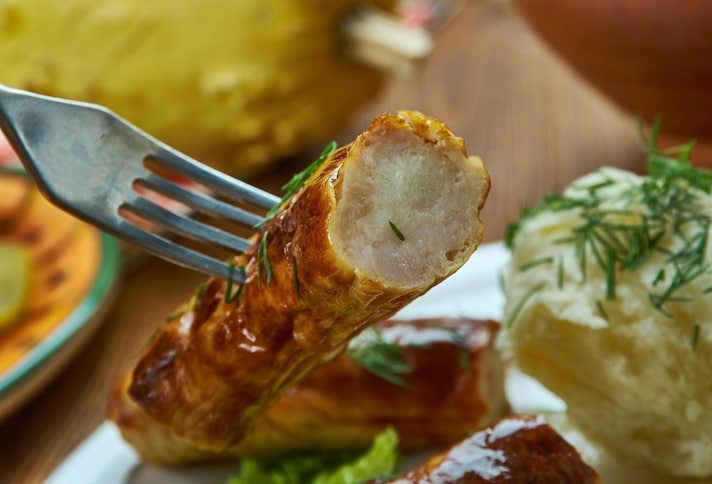
Known as medisterpølse, this Danish sausage is thick and spicy, made with minced pork and lard. Its sweet flavor comes from the finely minced meat seasoned with chopped onion, cloves, salt, and pepper. It is usually purchased raw and cooked immediately before serving, often fried for a delicious flavor.
10. Finnish Sausages
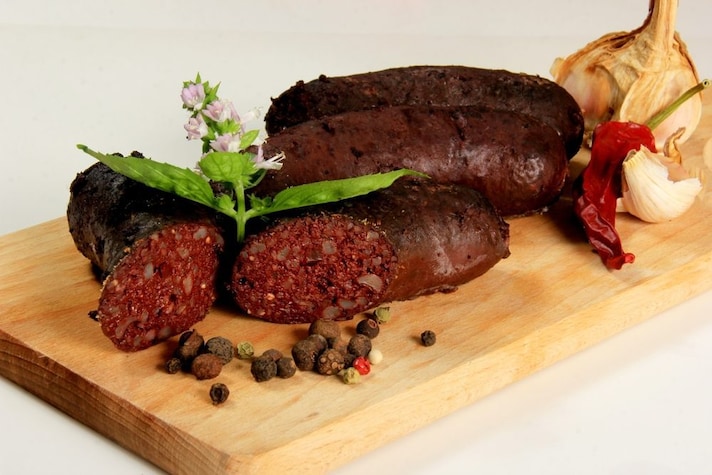
The distinctive dark color of mustamakkara, meaning "black sausage" in Finnish, comes from a mixture of pork blood and meat. Seasoned with onion, flour, lard, and ground rye, this sausage can be grilled, baked, or pan-fried. Some people enjoy it with milk and cranberry sauce.
11. Romanian Sausages
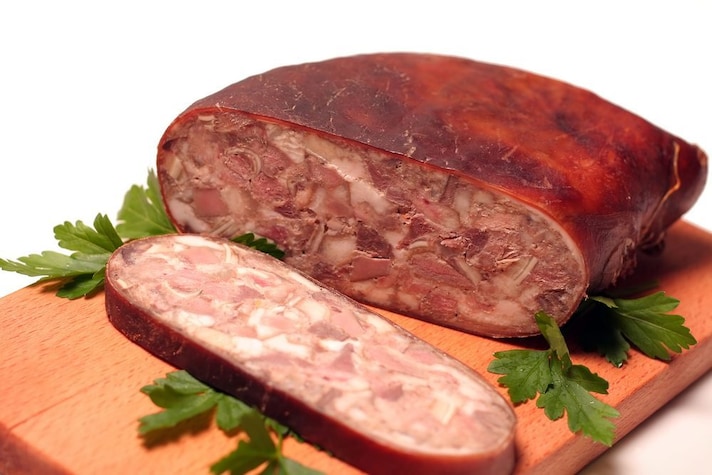
In Romania, if you want to eat a sausage, you have to ask for a toba: made with meat, bacon, but also with offal (including tongue, ears, liver), the meat is not minced but cut with a knife and seasoned with spices, including bay leaves, pepper, coriander and garlic.
12. Polish Sausages
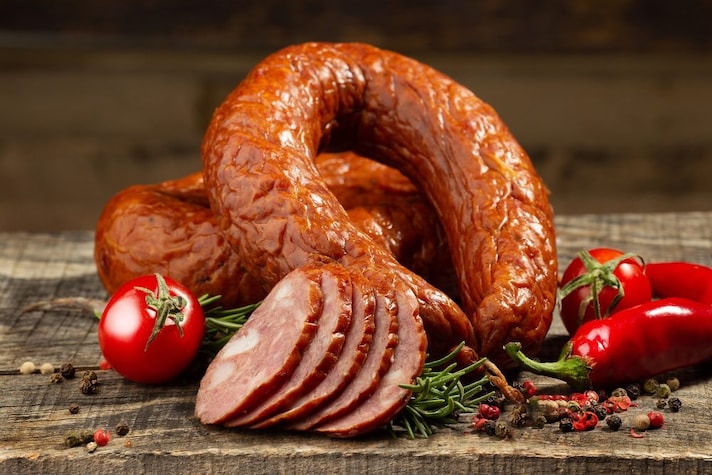
Kielbasa lisiecka PGI is a smoked pork sausage produced in the province of Kraków, Poland. Its unique crown shape, with a firm texture and a spicy flavor enhanced by garlic, salt, and pepper, makes it unique. Its originality lies in the variety of meat used, with larger pieces surrounded by a finer texture. This sausage represents a culinary excellence of the Małopolska region and embodies the tradition and expertise of local producers. Its artisanal production makes it a unique delicacy to savor and appreciate.
13. Czech Sausages
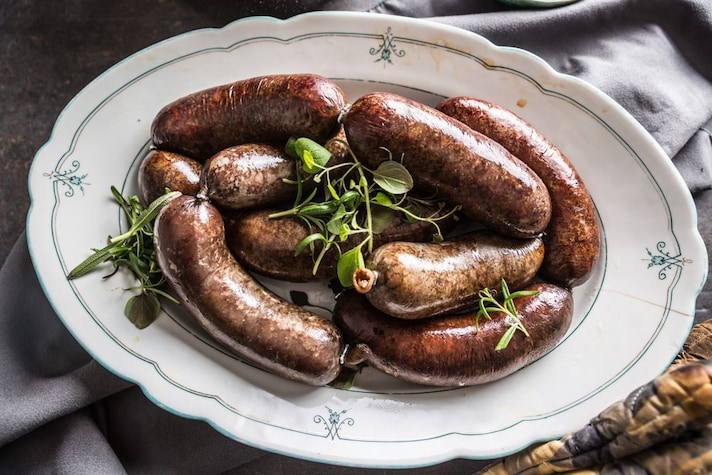
In the Czech Republic, jitrnice is a traditional sausage that reflects the principle of wasting nothing during pig slaughter. Made with head, offal, and barley, seasoned with ginger, garlic, and pepper, it is cooked in broth and then dried. What makes it unique is the fact that the ends are tied with small wooden sticks, a symbol of its authenticity. A dish that celebrates the full use of the animal and the cultural roots linked to family cooking.
14. Balkan Countries Sausages
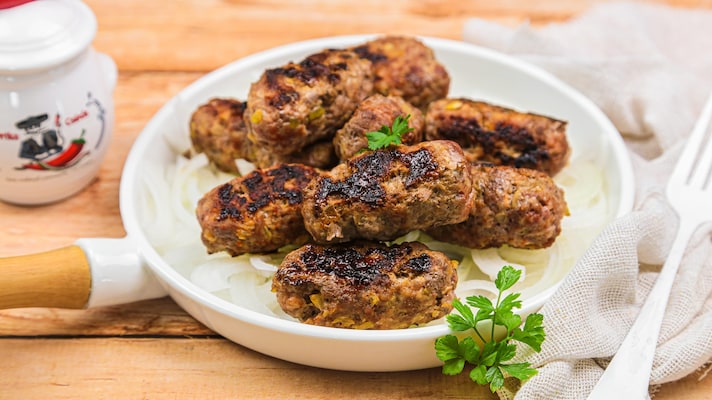
They're called cevapčići and are typical Balkan sausages made with beef and lamb, seasoned with spices. They're usually served with white onion and ajvar, a spicy sauce made with red peppers, or with kajmak, a Balkan dairy cream. They're delicious and can be cooked on the barbecue, grill, or griddle. They can also be floured and pan-fried, and are perfect on bread in a variety of ways.
15. Greek Sausages
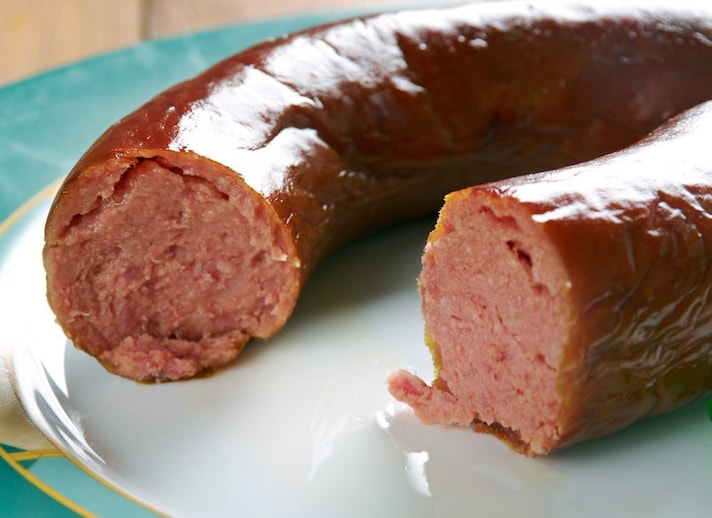
Derived from Italian sausage, lukaniko is a generic name in Greece for a sausage. There are countless varieties, from those seasoned with fennel seeds, orange peel, dried herbs and seeds, to those sometimes enriched with leeks and smoked over aromatic wood. It is served as a snack or appetizer, sliced and fried, often accompanied by saganaki, a pan-fried cheese, or used in more complex Greek dishes.
16. North African Sausages
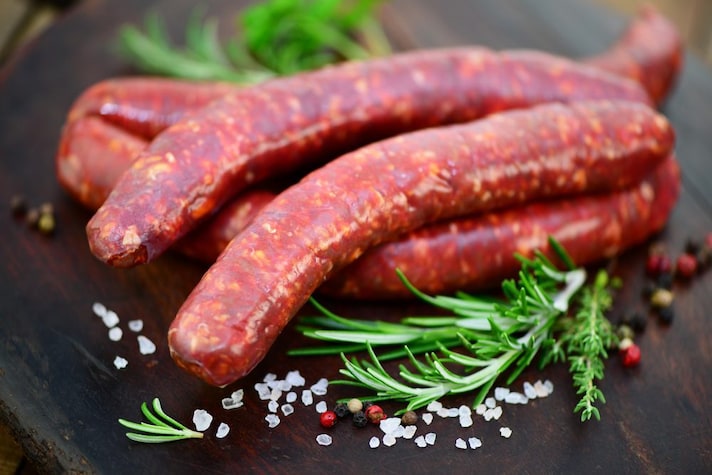
Merguez, a traditional fresh sausage from the Maghreb, is particularly popular in Morocco and other parts of North Africa. Made from mutton and beef, it is renowned for its red color and slightly spicy flavor, thanks to the chili pepper, and enriched with spices such as cumin, sumac, fennel, and garlic. This sausage is versatile, excellent both pan-fried and grilled, and is ideal with couscous. It is also used dried to flavor tagines.
17. South African Sausages

A South African specialty but widespread throughout Southern Africa, boerewors is made almost entirely from lean beef and fattier pork cuts; the remainder is made with various spices, including coriander, cloves, nutmeg, black pepper, and even a little wine and brown sugar. This boldly flavored dish is excellent grilled.
18. Chinese Sausages
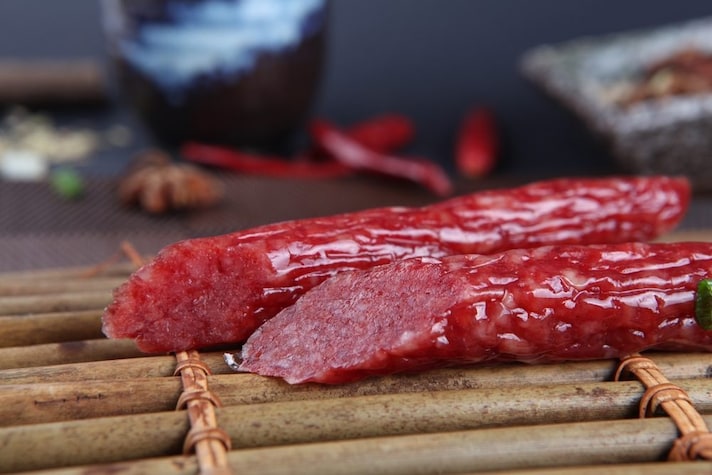
Lap cheong is a renowned Chinese sausage with a sweet, rich flavor profile, characterized by a harmonious combination of pork, rice wine, and spices. This sausage best develops its unique flavor when steamed, a cooking method that accentuates its sweetness. This characteristic makes it an excellent choice for dishes like fried rice or as a delicious snack.
19. Korean Sausages
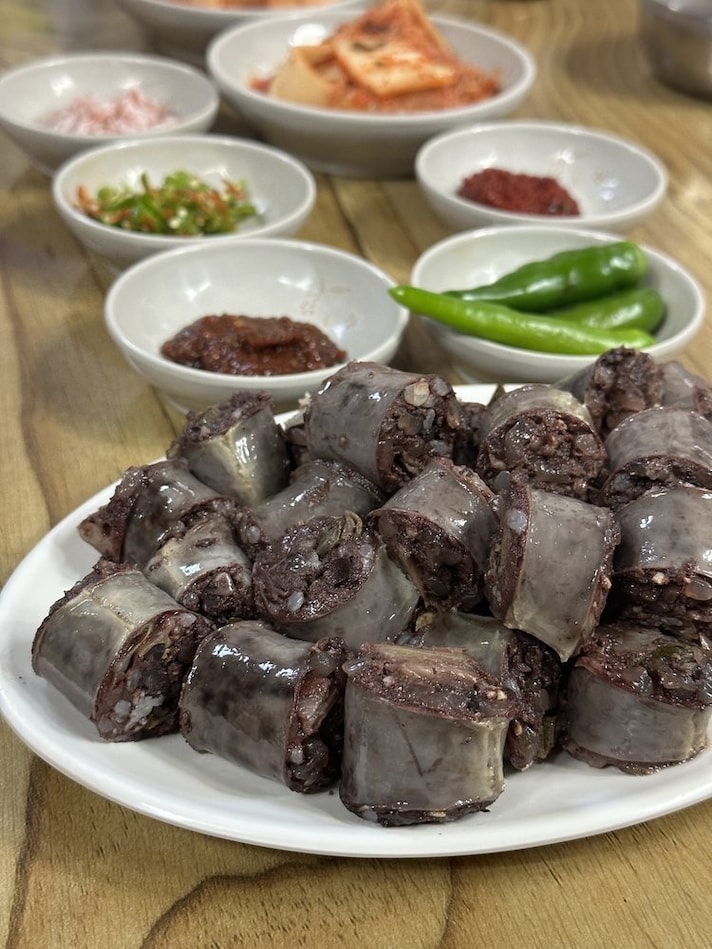
Sundae is a traditional Korean sausage with ancient roots, dating back to 1653 according to historical sources. It was created to avoid waste by using all parts of the animal and is widely consumed in both Koreas. Its preparation involves using pork or beef intestines stuffed with a mixture of ingredients such as dangmyeon, barley, pork blood, and offal, but variations with other ingredients exist. It can be boiled or steamed and is suitable for a variety of culinary preparations.
20. Georgian Sausages
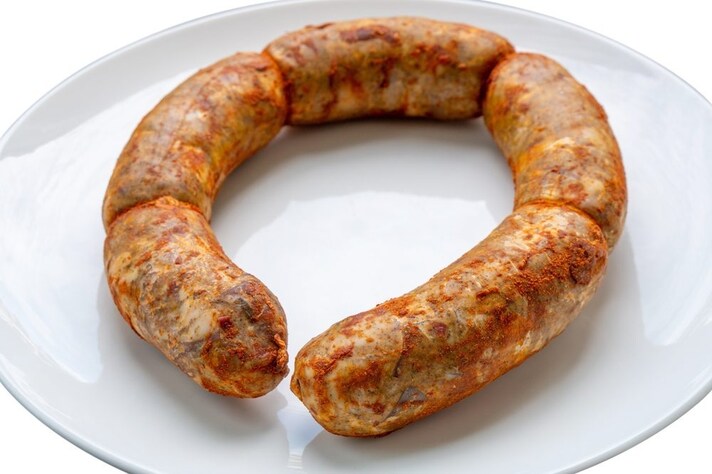
Kupati, a traditional Georgian sausage, is a dish that reflects the country's rich culinary tradition. In addition to beef and pork, often separated or combined, this sausage is made with offal and a blend of spices that lends it a unique flavor. It can be eaten raw as a snack or fried for a crispy treat. This sausage is beloved in Georgia and represents an important part of the country's gastronomic culture.
22. Kazakh Sausages
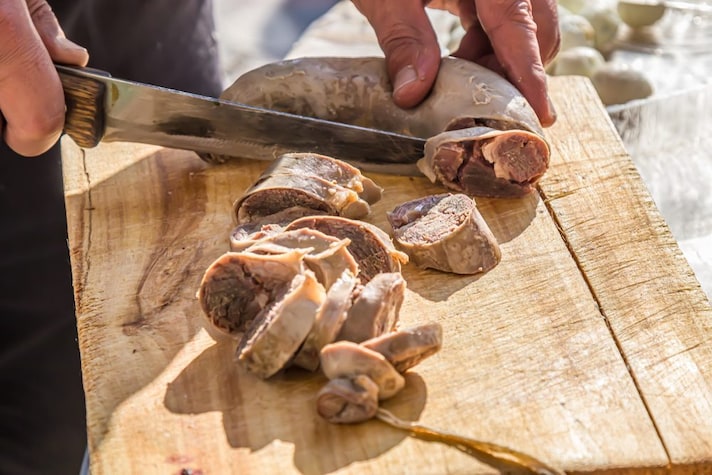
We're often accustomed to the flavor of pork in sausages, but in Kazakhstan, kazy is made with horse meat and fat, seasoned with spices like black pepper, garlic, and cumin, which lends it a delicious and delicately aromatic flavor. Kazy is produced entirely by hand, without the use of chemical additives, and can be enjoyed cold, sliced, or used to flavor other dishes.
23. Thai Sausages
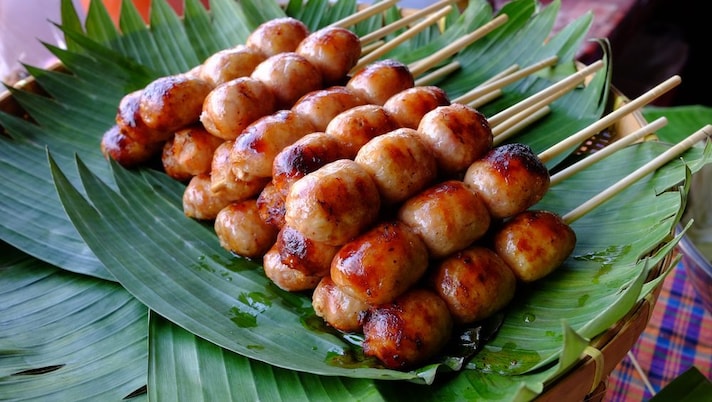
The two most famous Thai sausages are sai krok isan and sai ua, which differ both in their ingredients and in their preparation and serving. While the former is known for its fermented, sour taste and is served with raw vegetables and ginger, sai ua is prized for its rich herb and spice flavor and its grilled texture. Both are unique expressions of Thailand's rich culinary tradition, but are distinctly different in taste and presentation.
24. Argentinian Sausages

Paprika gives it its red color, while cumin and the beef and pork give Argentine chorizo its distinctive flavor. This sausage can be cooked in various ways, such as grilled or pan-fried. It's a classic ingredient in asados, a traditional form of barbecue popular in Argentina, which represents not only a cooking method but also carries significant cultural and social weight.
25. Chilean Sausages

Like many Latin American cultures, Chilean cuisine has been heavily influenced by Spanish cuisine. Longaniza, in fact, is a legacy of the Iberian Peninsula and is used in a variety of recipes: it is a raw, uncured sausage, often made with pork, but can also include beef. This sausage is seasoned with a variety of spices, such as cumin and other aromatic herbs, which give it a distinctive, aromatic flavor. It is often served with legumes and to flavor soups.
26. Cuban Sausages
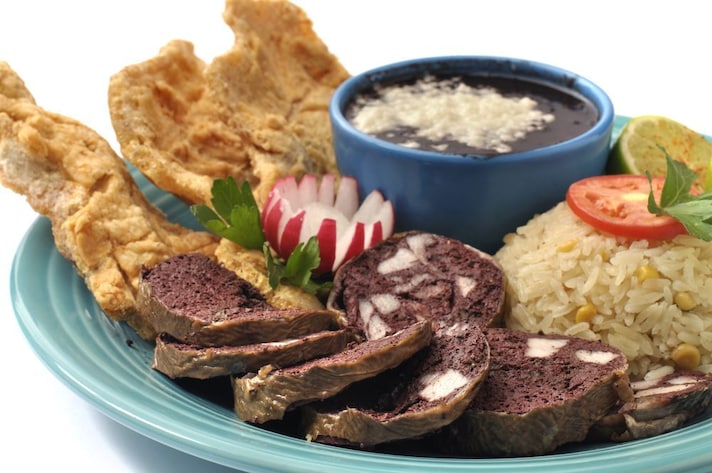
To make moronga, the sausage typical of Cuba and other Latin American countries, blood is mixed with meat, spices such as rue, oregano, mint, onions, and chili pepper. This mixture is stuffed into a pig's intestine and boiled for a long time. It is often served with red or green chile sauce.
;Resize,width=767;)
